 | ||
Similar Hitchin railway station, Cambridge railway station, Hornsey railway station, Welwyn North railway st, Stevenage railway station | ||
Hitchin flyover 28 06 2013
The Hitchin Flyover is a grade-separated single-track railway flyover on the Great Northern Route near Hitchin, Hertfordshire, England, which carries the Down Cambridge Flyover line over the East Coast Main Line. Constructed between 2012 and 2013, it was built to increase the throughput at Cambridge Junction, a congested flat ("at-grade") junction with the East Coast Main Line just north of Hitchin, which put severe constraints on capacity on both that line and the Cambridge Line.
Contents
- Hitchin flyover 28 06 2013
- London king s cross to cambridge express via new hitchin flyover
- History
- Present day
- References
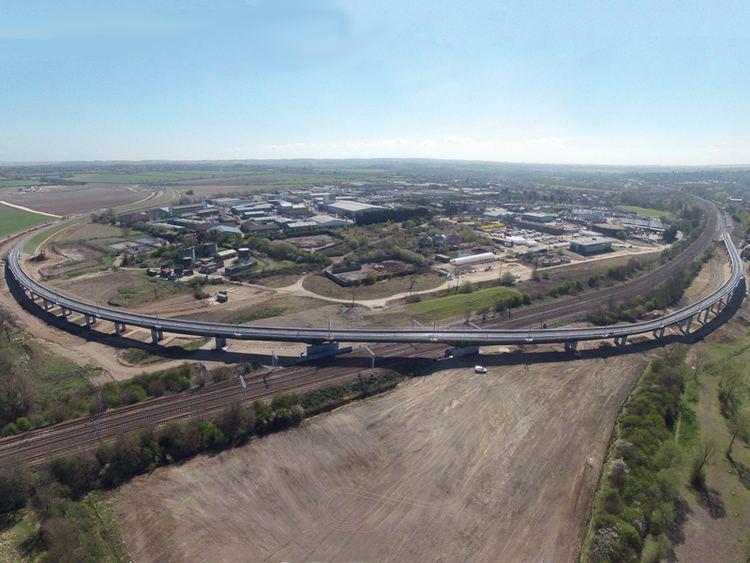
London king s cross to cambridge express via new hitchin flyover
History
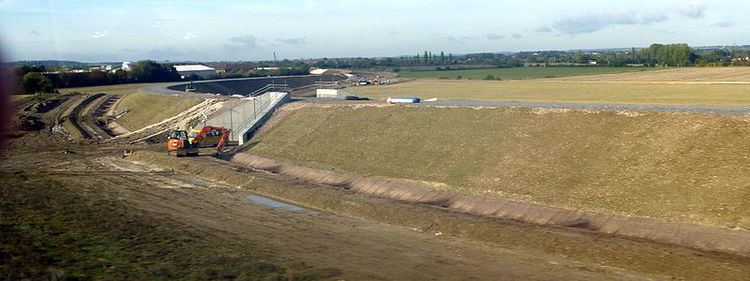
Together with the Digswell Viaduct some ten miles to the south, the flat junction just north of Hitchin was a major bottleneck, as northbound trains diverging from the East Coast Main Line towards Letchworth and thence to Cambridge had to cross one northbound (fast) line and two southbound (fast and slow) lines to access the Cambridge Line. Proposals as part of the original electrification work in the early 1970s envisaged a new underpass here and land was set aside for its construction. However, budgetary constraints forced this part of the programme to be abandoned. The land stood empty for many years, but has since been used to provide new housing.
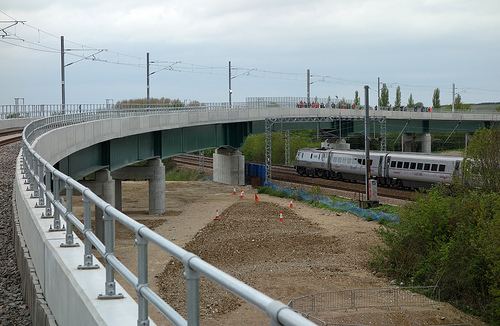
A new plan and subsequent application for an order to build a flyover was approved after an Planning Inspectorate report and public inquiry between 11 and 25 May 2010.
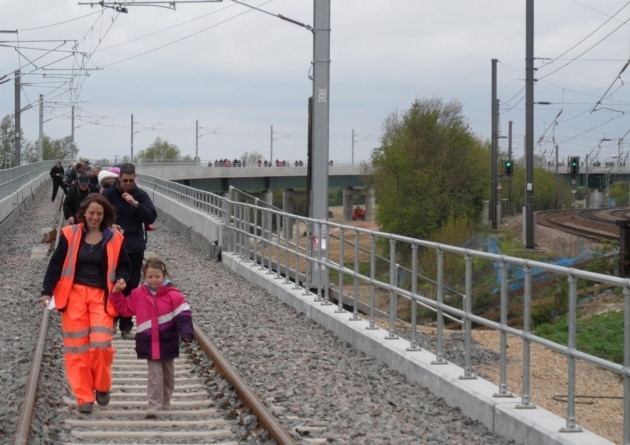
Construction was completed in June 2013. Original plans were to build the embankment using aggregate trucked in from elsewhere, but eventually it was decided to build up the embankment using chalk taken from the nearby Wilbury Hills, low-lying chalk hills forming part of the Chiltern Hills, from less than 1 mile (1.6 km) away, removing the need for lorry movements along public roads. The chalk was quarried from just beyond the ancient Icknield Way, which at this point is a public bridlepath between Ickleford and Letchworth Garden City, and the contractor was required to refill and replant the quarry afterwards.

Since the embankment materials were locally sourced it also meant that the new embankment was effectively pre-seeded with poppies. This means the entire embankment is covered in red poppies during their flowering season giving the name to the location 'Poppy Bank'.
Present day
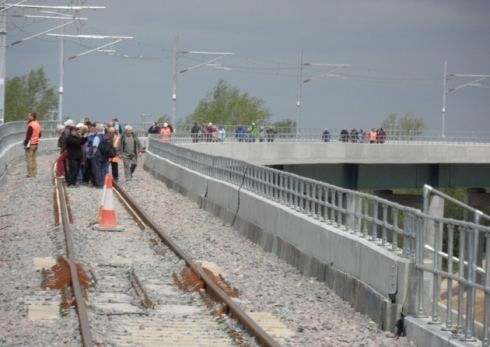
The scheme has created a new single-track line that diverges from the northbound slow line at Hitchin North Junction just beyond Hitchin station, using a short embankment section of the former Bedford to Hitchin Line, a section of which was cleared of vegetation and made progressively higher, to form a short ramp. The track is carried over the East Coast Main Line on a newly constructed viaduct and onto a new embankment to join the present Cambridge Line at the newly created Hitchin East Junction, closer to Letchworth.
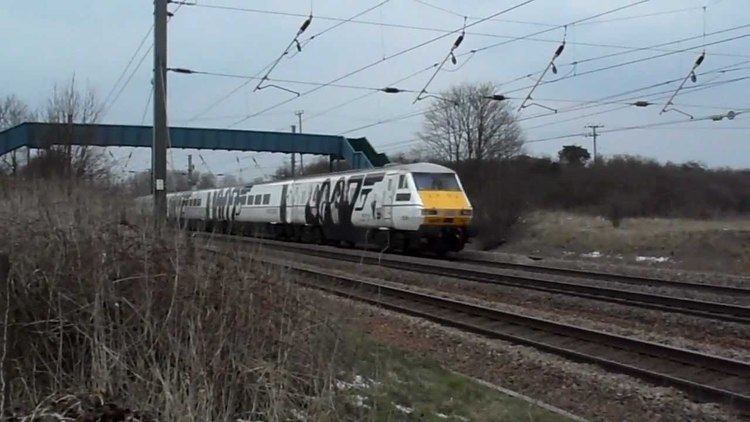
Although this routing skirts around the flat junction in a curve that takes trains over a physically longer distance, it removes the need for them to dwell at Hitchin – sometimes for several minutes – awaiting a path across the tracks of the main London-Peterborough route, thus decreasing the overall journey time to Cambridge in many instances, and never increasing it by more than 40 seconds. The scheme improves the punctuality and reliability of both the London-Cambridge and London-Peterborough routes, the latter because Peterborough-bound stopping trains are no longer delayed if running closely behind a Cambridge service being held at Hitchin waiting to cross the flat junction.
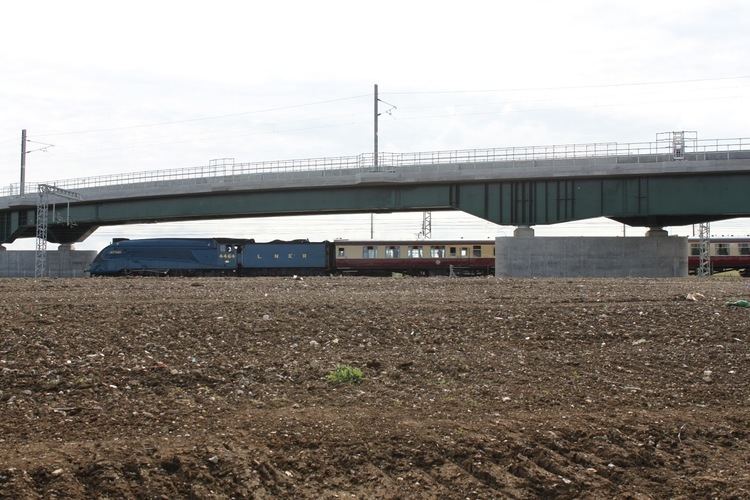
The flat junction is still in regular use, as it enables trains on both the down fast and down slow lines to clear the ECML simultaneously towards Letchworth. Under the current timetable (May-Dec 2015), this can be seen at 18:38 on week days, when under booked pathing the 18:14 Kings Cross to King's Lynn crosses from the Down Fast Line via Cambridge Junction en route to Royston, whilst the 17:52 Kings Cross to Cambridge stopping service on the Down Slow Line takes the longer route via Hitchin Flyover and calls at Letchworth after the King's Lynn service has passed.
In May 2013, shortly before the Flyover opened, Network Rail together with Garden House Hospice, a local hospice charity, invited people of Hitchin and Letchworth to walk the line as their last chance to see it along the tracks before it opened for service.
On 26 June 2013, passenger services began to use the flyover, up to three services per day using it during regular service and driver training. The flyover came into full use in December 2013 with the introduction of the new timetable.
The route was designed so that all, even the heavy freight trains, can use the flyover. This was discussed with the project engineer at the time of opening.
By January 2015 the only form of traction not to have used the flyover was electric locomotives (regular services are electric multiple units); the Union of South Africa became the first steam engine on the flyover when it moved empty coaching stock to Cambridge in preparation for a tour to York.
